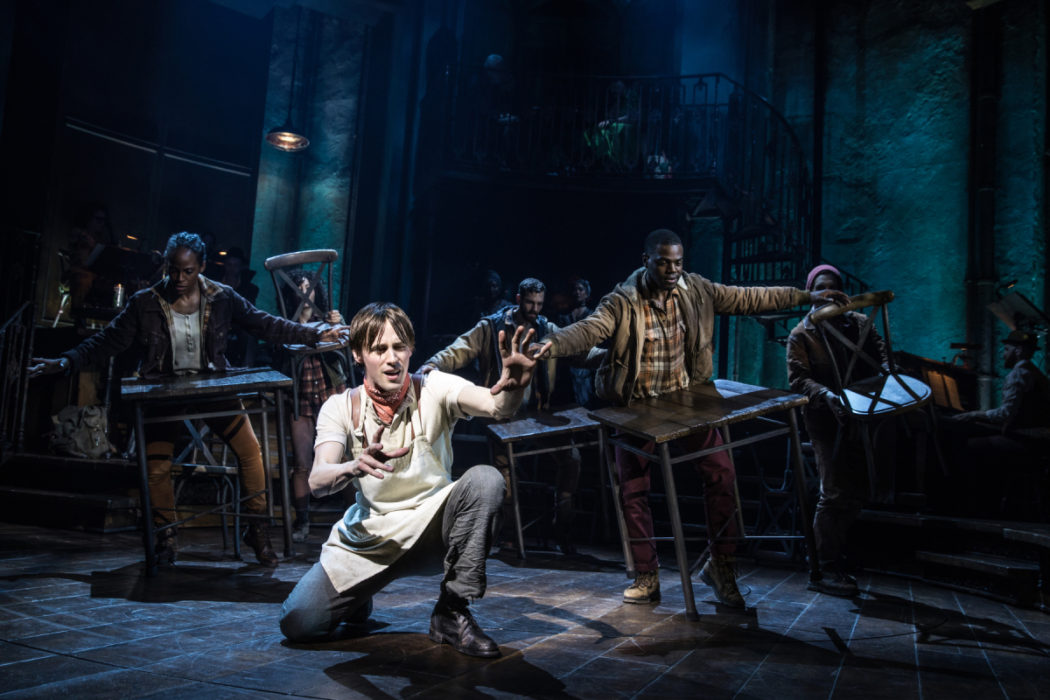Hadestown: Greek mythology but make it a musical
Original plot, settings and style combinations are taking modern Broadway by storm: the founding fathers and hip-hop, the Russian aristocracy and electric-pop-opera, pre-Elizabethan queens and girl-bands. “Hadestown,” by mixing Greek mythology with jazz, also fits this mold.
Set in a steam-punk outpost on the edge of a railroad track leading to Hell, this folkloric musical loosely follows the plot of the classic myths of Orpheus and Eurydice, as well as Hades and Persephone.
Hades is the king of the underworld, or Hadestown, which he runs like a late 19th-century American monopoly. Grown hard and jealous with time, he refuses to allow his wife Persephone, the goddess of spring, to return to the surface to allow crops to grow. The Earth is dying as a result because the weather is either too hot or too cold for anything to grow. As people grow desperate, they begin selling themselves to Hades for protection and he makes them slaves who work day and night to build a wall around his kingdom to block out the world and protect what is rightfully his.
In the midst of this struggle, a cosmic love sparks. Eurydice is a hungry young girl who, like Hades, shuts out the world to protect herself. But when she meets Orpheus, a naive poet working on a song to bring the Earth back into tune, she falls in love. Their souls are connected through an otherworldly power. But when they are separated by a storm and Eurydice falls under Hades’ manipulation, Orpheus must use all his god-given gifts to get her back.
A story of passion, resilience and hardship, “Hadestown” tests the power of love through the crucible of gods, men, fate and — most dangerous of all — human nature’s tendency to doubt. A showcase of modern theater at its finest. If you are not left devastated by the final number, you weren’t listening well enough.
Though “Hadestown” takes poetic license with characters and plot, it effortlessly enhances classic mythology for modern audiences.
Hades is a businessman who rules his kingdom with an iron fist. He calls the souls of Hadestown his children while forcing them into lifetimes of grueling servitude. Persephone is your stereotypical drunk aunt. She loves to laugh and dances around at any chance she gets, but don’t land on the receiving end of her rage. Hermes is cast as the story’s lead narrator, taking on the role of both Orpheus’ aged mentor and guide as well as the optimistic storyteller who helps guide the audience along and in the end, provides much-needed catharsis. The Fates, as in mythology, are three mysterious women who, throughout the show, are both provoking, alluring, dangerous and friendly.
Modernization isn’t isolated to characterization. The plot subtly touches political issues as well. Act one concludes with a powerful number called “Why We Build the Wall,” in which Hades indoctrinates his slaves in the need to build a wall to keep out poverty — the enemy of progress. A fitting song considering the current governance. In the second act, after Orpheus has seen the horrors of Hadestown firsthand, he sings a heartbreaking and thought-provoking ballad, “If It’s True”. In it, he questions why people should be forced to mindlessly follow an oppressive government. He unknowingly encourages the slaves to lift their heads, raise their voices and try to change their fates.
Beyond this, “Hadestown” follows in the footsteps of “Hamilton” with an unapologetically diverse cast.
In a time riddled of government corruption, political unrest, racial tension, revolutionary protests and a fast-approaching election, “Hadestown” subtly encourages political awareness and activism.
This broadway sensation was not always a large-scale production. Singer-songwriter Anaïs Mitchell first wrote the musical as a short stage production in 2006, which went on a 10-city tour between local Vermont and Massachusetts. In 2010, she released a concept album of the show since the story was incomplete and less than half its final runtime. The show got a big break in 2012 when Rachel Chavkin, who had just directed the off-broadway production of “Natasha-Pierre & the Great Comet of 1812,” agreed to direct it. She and Mitchell worked to expand the plot with an additional 15 songs, as well as intermittent dialogue. “Hadestown” hit off-broadway at the New York Theatre Workshop in 2016 and released a live recording. The show then went to London in 2017 before hitting Broadway in March 2019.
In 2019, the show was nominated for 14 Tony Awards and won eight, including Best Musical.
My personal suggestion is to find a long drive, walk or some free time and listen to the cast recording in chronological order. This way you get the full story and can truly appreciate the plot’s beautiful tragedy and the music’s unique intricacy. If you’re not interested in dedicating a full two hours, I suggest listening to at least “Wait for me” or “Way Down Hadestown.”
Enjoy!
 Dara Lusk was born and raised in northern Virginia outside of Washington, DC. She is majoring in English with an emphasis in Technical/Professional Writing and a minor in Anthropology. When not writing she loves reading and annotating classic literature.
Dara Lusk was born and raised in northern Virginia outside of Washington, DC. She is majoring in English with an emphasis in Technical/Professional Writing and a minor in Anthropology. When not writing she loves reading and annotating classic literature.
—dara.lusk@usu.edu
@dara_marie_

